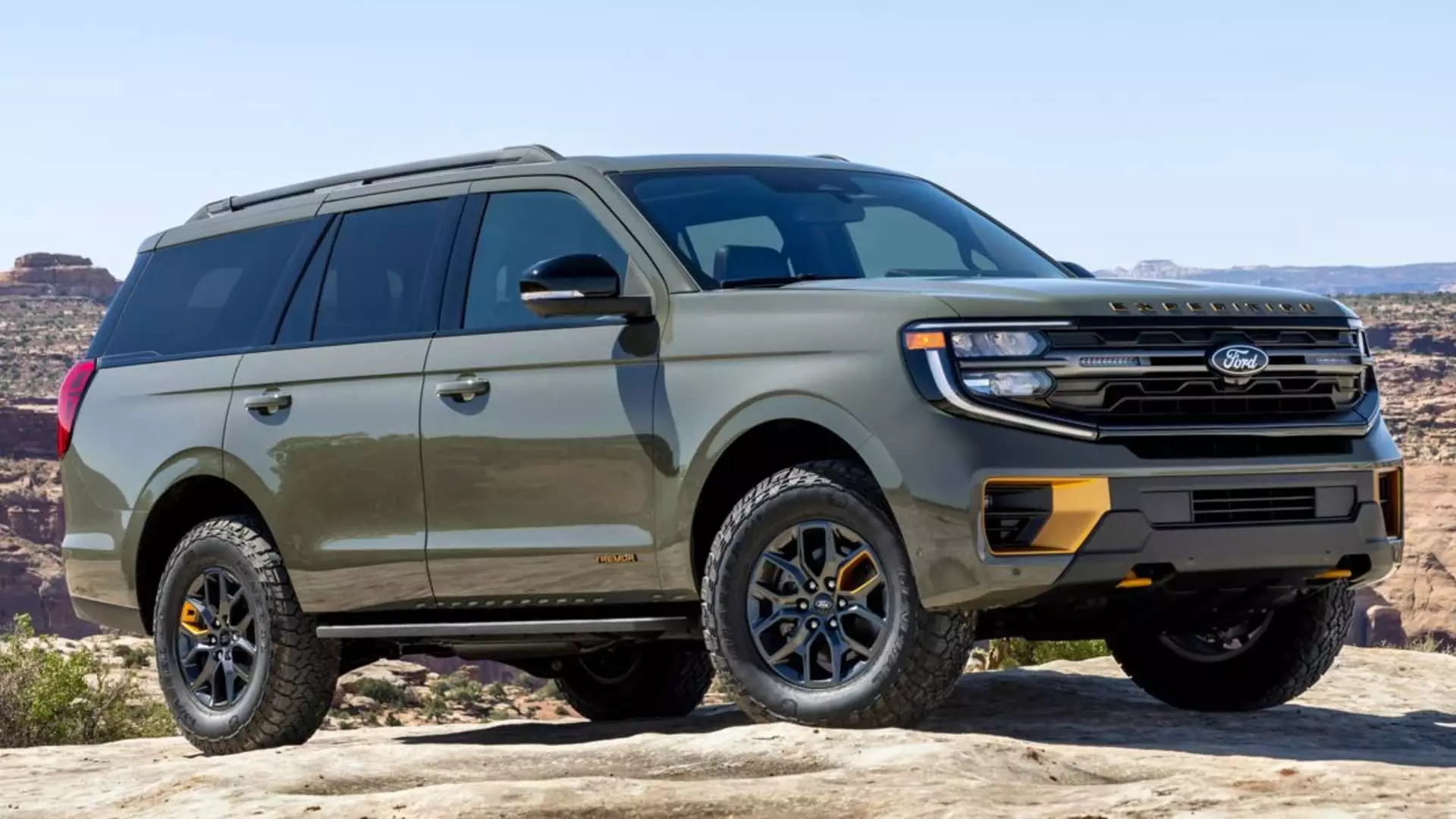Ford Motor Company has embarked on a significant journey to revitalize its large Expedition SUV, emphasizing luxury and advanced technology to stay competitive in a dynamic market. As new rivals emerge and customer expectations evolve, Ford recognizes the necessity to refine its offerings. The redesigned Expedition showcases a meticulous attention to detail, marrying comfort with cutting-edge innovations—a testament to Ford’s commitment to understanding consumer needs. At the heart of this transformation is the extensive feedback gathered from over 1,100 hours of discussions with potential users, which has profoundly influenced every facet of the SUV’s design.
Interior and Exterior Makeover
The changes to the Expedition are not merely cosmetic. This three-row SUV boasts an elegant new look, both inside and out. The dashboard has been revamped to include an impressive 24-inch driver display that enhances usability and aesthetics. By focusing on a smoother design, Ford aims to create an environment that facilitates interaction and travel comfort, thus making long journeys feel less daunting. Such design updates are informed by the goal of making life easier for families, affirming Ford’s dedication to enhancing the utility of their vehicles during family outings—before, during, and after every trip.
Among the notable advancements incorporated into the new Expedition is the BlueCruise hands-free highway driving system. This technology not only represents a leap towards autonomous driving capabilities but also aligns with the growing demand for connectivity and ease in driving experiences. With safety features that allow for hands-free travel on designated highways, Ford is responding to a trend that prioritizes both driver convenience and passenger security. As families increasingly look for vehicles equipped with modern tech, the Expedition’s offerings stand to attract tech-savvy consumers.
Competitive Landscape and Market Strategy
When examining the competitive landscape, it’s evident that the full-size SUV segment is rapidly evolving. Ford’s primary competitors, including the Chevrolet Tahoe and GMC Yukon from General Motors, have long dominated this space. However, the introduction of challengers such as the Jeep Wagoneer and three-row crossovers like the Kia Telluride and Hyundai Palisade is reshaping buyer preferences. These rivals, while smaller and generally more affordable, are increasingly favored in the market, prompting Ford to reassess its strategy. The full-size SUV segment has seen a notable rise, now representing 2.7% of the U.S. market, a significant increase since 2017, which poses both challenges and opportunities for manufacturers.
As for pricing, Ford has yet to disclose numbers for the 2025 Expedition, opting to wait until the vehicle’s dealership arrival in spring. Current base prices range significantly, from $55,000 to $84,000 depending on the model, with an average transaction price around $70,000. The strategic decision to withhold pricing may build anticipation, yet it places the onus on Ford to ensure the new Expedition offers remarkable value for its price point. With the introduction of variations such as the King Ranch and Tremor models, Ford is looking to cater to diverse consumer interests, from performance enthusiasts to luxury seekers.
The redesigned Ford Expedition emerges at a crucial juncture, as it not only aims to capture market share but also strives to redefine consumer expectations. With an unwavering focus on refinement, technology, and user feedback, Ford is poised to reclaim its position as a key player in the full-size SUV segment.

Leave a Reply